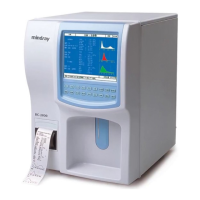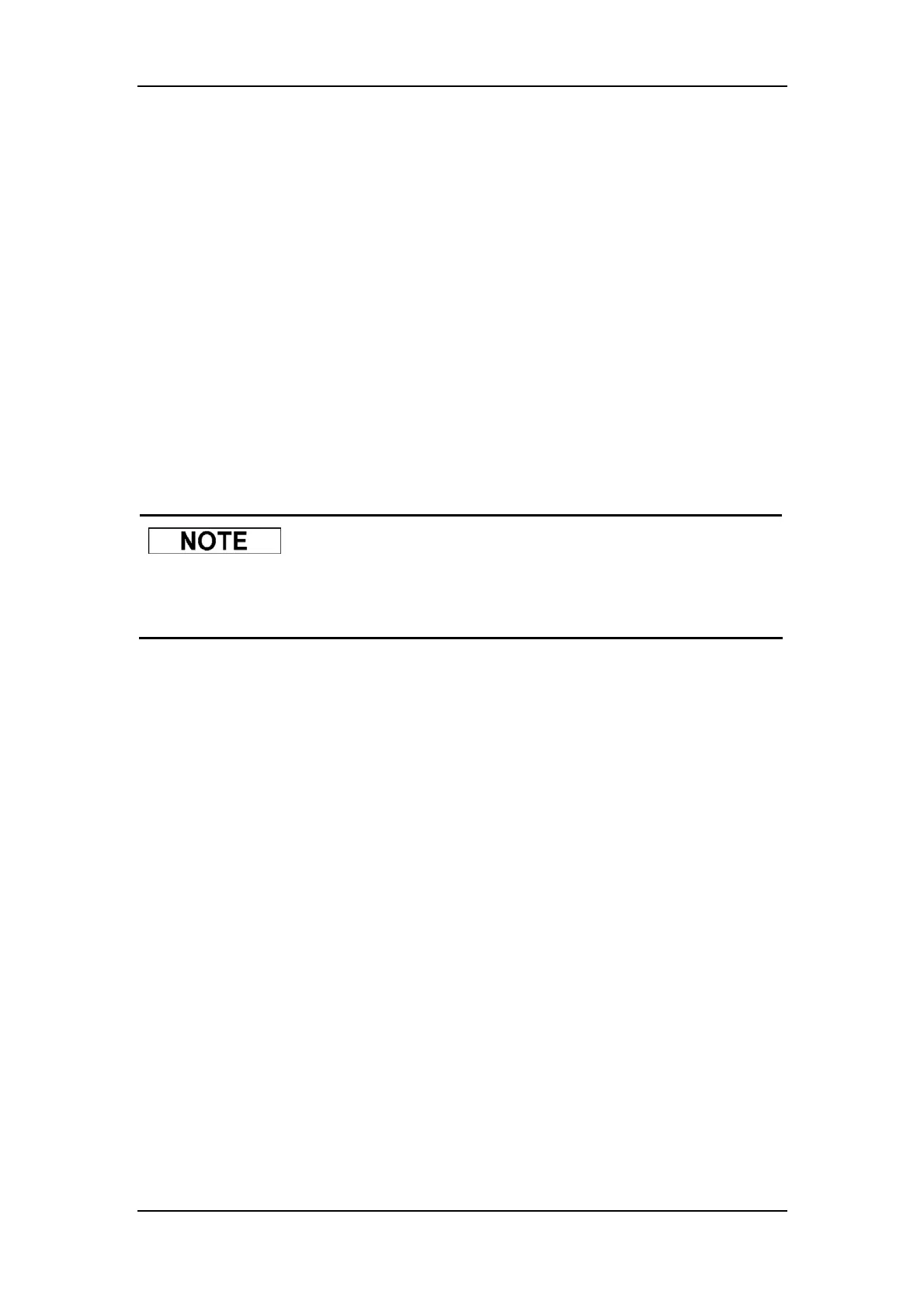Operating Your Analyzer
6-18
platelet clumps, giant platelets, nucleated red cell, insolvable red cell, protein and lipoid
debris in sample, or electrical noise.
R
2
: indicates abnormality between the lymphocyte hump and the mid-sized cell area and
possible presence of abnormal lymphocyte, plasma cell, atypical lymphocyte, original
granulocytes in the sample and eosinophilia or basophilia.
R
3
: indicates abnormality between the mid-sized cell area and the granulocytes and possible
presence of immature granulocytes, abnormal sub-population in the sample, or eosinophilia.
R
4
: indicates abnormality on the right side of the granulocytes hump and netrophilia.
R
m
: indicates at least two R flags.
Abnormal PLT histograms will be flagged by one of the markings: P
m
, P
S
and P
L.
P
m
: indicates blur demarcation between the platelet and red blood cell area and possible
presence of large platelet, platelet coagulation, small red blood cell, cell debris or fibrin.
P
S
: indicates excessive small PLTs.
P
L
: indicates excessive large PLTs.
z When the PLT value is less than 100 × 10
9
/ L, a manual count by the
microscope is recommended.
Adjusting histograms manually
If you are not satisfied with the obtained histograms, you can adjust them manually, provided
you have the administrator password. See Chapter 7 Reviewing Sample Results for
details.

